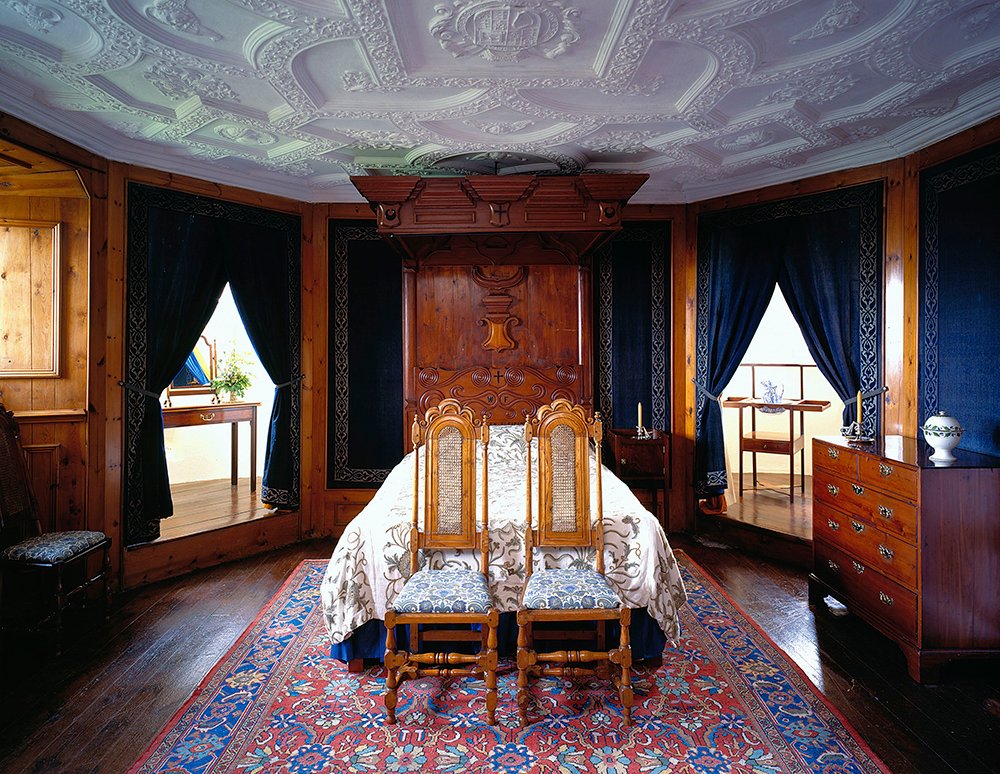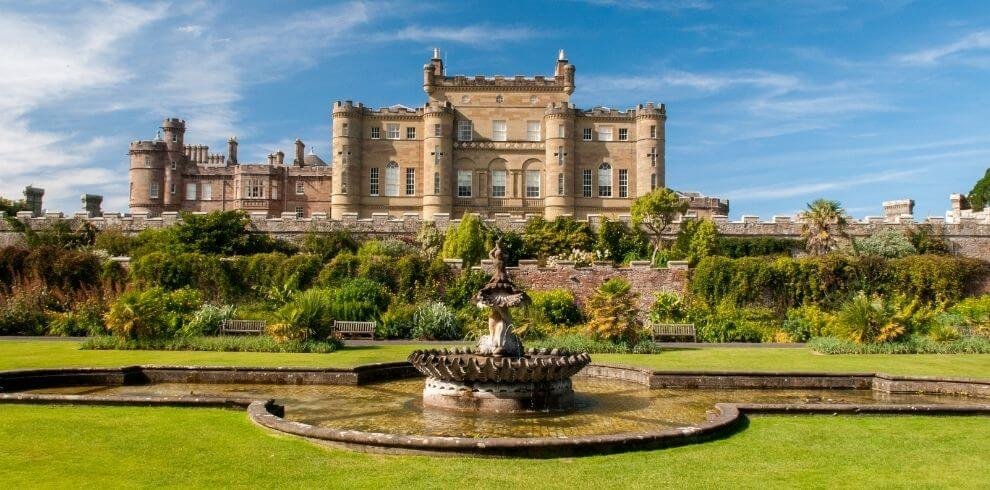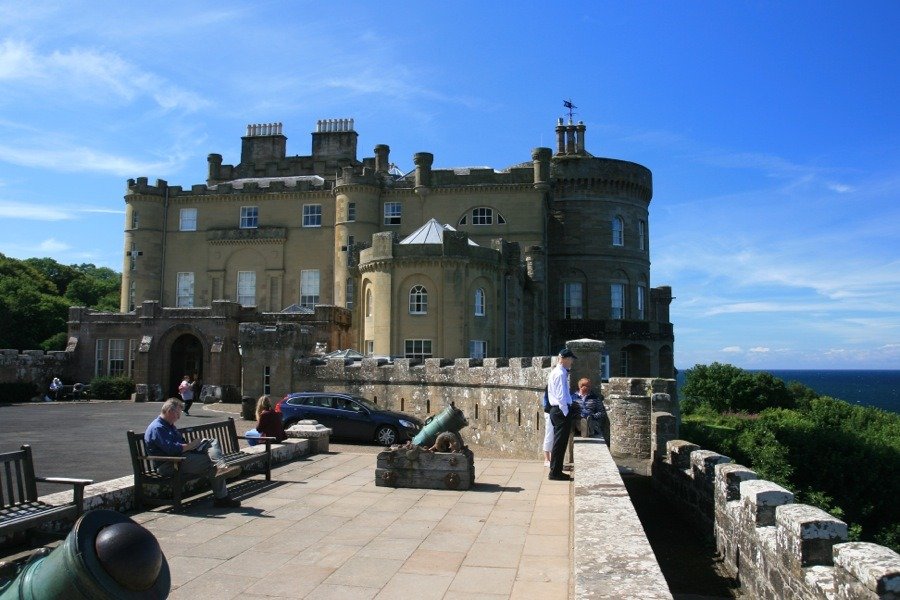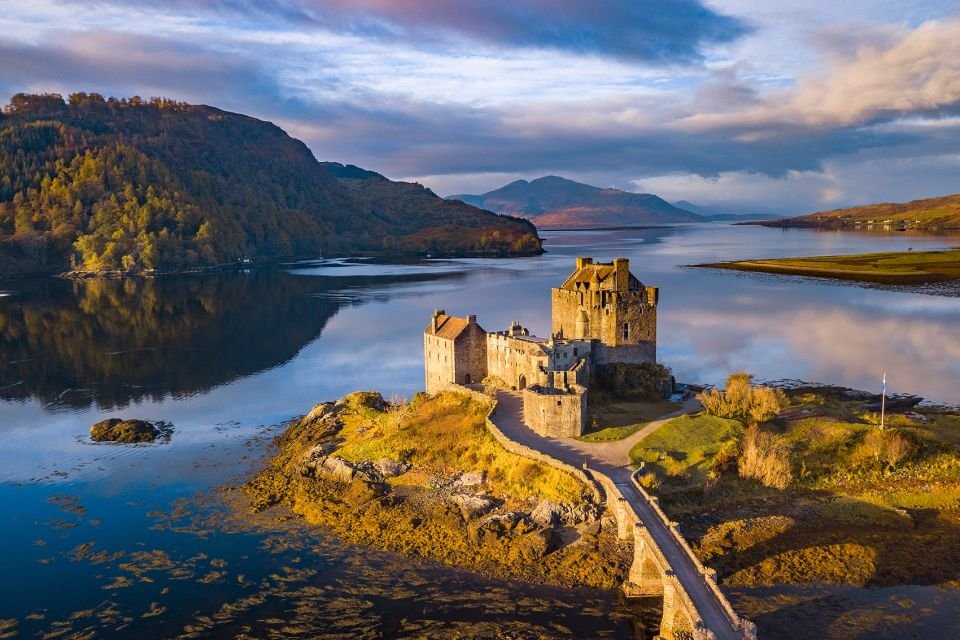Scotland can boast of having a large number of castles in its landscape. Wonderful buildings built on hills or by rivers combined with green nature are a magical fairy-tale sight that characterizes the Scottish country. Although by definition a castle is a complex of fortified and defensive residential buildings, in Scotland the concept is much broader. It includes not only fortresses, but also residences, palaces or simply country manor houses without any defensive elements. Some of them have been preserved in excellent condition, while others remain ruins. There is no doubt that they are full of fascinating stories, some have dark legends associated with them, and all of them are an integral part of the Scottish landscape. There are approximately 2,000 buildings that have survived to this day in Scotland.
Visiting The Castle
When planning to visit Scottish castles, remember that most of them are privately owned. This means that some of them are not available to tourists at all, and others can only be seen after obtaining permission from the owner. Sometimes, there is a telephone number at the gate where you can call and make an appointment. Some privately owned Scottish castles are open to tourists, but only during the summer season (April/May to September/October). Unfortunately, even then there is no 100% guarantee that you will be able to see them. Private residences are often rented for various types of events and celebrations, so if you are unlucky, they may be closed. Some castles also serve as luxury hotels today and are then available only to guests. Of course, many beautiful buildings are under the care of state organizations and are open to visitors all year round.

Craigievar Castle


- Craigievar Castle is one of those Scottish castles that definitely looks more like a fairy tale than a typical defensive fortress. The brick-red color and the characteristic, quite compact shape of the building make Craigievar Castle quite difficult to confuse with any other Scottish castle. Building is under the care of the National Trust of Scotland.
Fraser Castle


- Fraser Castle is an impressive building which, together with the adjacent park and garden, forms quite a large estate. Here you can not only visit the castle and eat something good, but you can also choose from several walking routes, including one specially designated for pets. The building is also under the care of the National Trust of Scotland. Craigievar Castle and Fraser Castle are quite close to each other so you can visit both at the same time.
Cawdor Castle


- Still home to the Cawdor family today, this ancient castle has evolved over 600 years and has been lovingly filled with beautiful furniture, beautiful portraits, intriguing objects and amazing tapestries. And its massive, austere facade belies the intimate interior, which gives this place a surprisingly personal, friendly atmosphere.
Inveraray Castle


- Beautiful and romantic Inveraray Castle & Gardens located on the shores of Loch Fyne is one of Scotland’s finest stately homes. The ancient Royal Burgh of Inveraray is located 60 miles north west of Glasgow by Loch Fyne in an area of spectacular natural beauty. The ruggedness of the highland scenery serves as a spectacular backdrop for the sheltered tidal Loch, beside which nestles the present Castle built between 1746 and 1789. The ancestral seat of the Dukes of Argyll, Chiefs of the Clan Campbell whose family have resided in Inveraray since the early 15th century.
Braemar Castle


- Braemar Castle is situated near the village of Braemar in Aberdeenshire, Scotland. It is a possession of the chief of Clan Farquharson and is leased to a local charitable foundation. It is open to the public.The present Braemar Castle was constructed in 1628 by John Erskine, Earl of Mar, as a hunting lodge and to counter the rising power of the Farquharsons,[2] replacing an older building, which was the successor of nearby Kindrochit Castle, which dates from the 11th century AD.
Dunrobin Castle


- Dunrobin Castle is the most northerly of Scotland’s great houses and the largest in the Northern Highlands with 189 rooms. The castle is open daily from 1st April – 31st October. Dunrobin Castle is also one of Britain’s oldest continuously inhabited houses dating back to the early 1300s, home to the Earls and later, the Dukes of Sutherland. The Castle, which resembles a French chateâu with its towering conical spires, has seen the architectural influences of Sir Charles Barry, who designed London’s Houses of Parliament, and Scotland’s own Sir Robert Lorimer. The Castle was used as a naval hospital during the First World War and as a boys’ boarding school from 1965 to 1972.
Inverness Castle


- In the heart of Inverness, the imposing Inverness Castle sits high on a hilltop with overlooking the River Ness. The present building, made from red sandstone, dates back to 1836 and currently houses the Inverness Sheriff and Justice of the Peace Court. However, 1057 saw the first construction of a castle on this site, said to have been built by King Malcolm III of Scotland. And since, it has been destroyed and rebuilt many times.
Balmoral Castle


- Situated in the heart of the Cairngorms National Park, Balmoral Castle is best known as a retreat of the Royal Family. As Balmoral is still used as a home to the Royal Family, the areas you can visit vary throughout the year. For the most accurate information on whether you’re currently able to visit Balmoral, please refer to the official website. On specific dates in the winter, from February to early March the grounds, gift shop and café open to visitors. To see and learn more during a visit to Balmoral, you must visit from late March to mid-August. During these summer months, you can enjoy an audio handset tour and exhibitions inside the castle.
Culzean Castle


- Rising majestically from its clifftop location looking out towards the Isle of Arran, Culzean is an iconic Scottish castle set in a large country park.Redesigned as a fashionable country retreat for the 10th Earl of Cassillis by Scottish architect Robert Adam in the 18th century, the castle’s elegant rooms and exquisite Georgian interiors offer the ultimate setting for events of all shapes and sizes. The large country park incorporates extensive gardens, woodland, beaches and secret follies – and offers the perfect backdrop for outdoor events and festivals.
Eilean Donan Castle


- Eilean Donan Castle is one of the most recognised castles in Scotland, and probably appears on more shortbread tins and calendars than any other. It is, without doubt, a Scottish icon and certainly one of the most popular visitor attractions in the Highlands. When you first set eyes on it, it is easy to understand why so many people flock to its stout doors year after year. Strategically located on its own little island, overlooking the Isle of Skye, at the point where three great sea-lochs meet, and surrounded by the majestic splendour of the forested mountains of Kintail, Eilean Donan’s setting is truly breath-taking. Following their arrival in the ample car park, visitors arrive at the bright modern visitor centre which houses the Ticket Office, Gift Shop and Restaurant. The entire operation is operated by the Conchra Charitable Trust which was established back in the 1980s.
